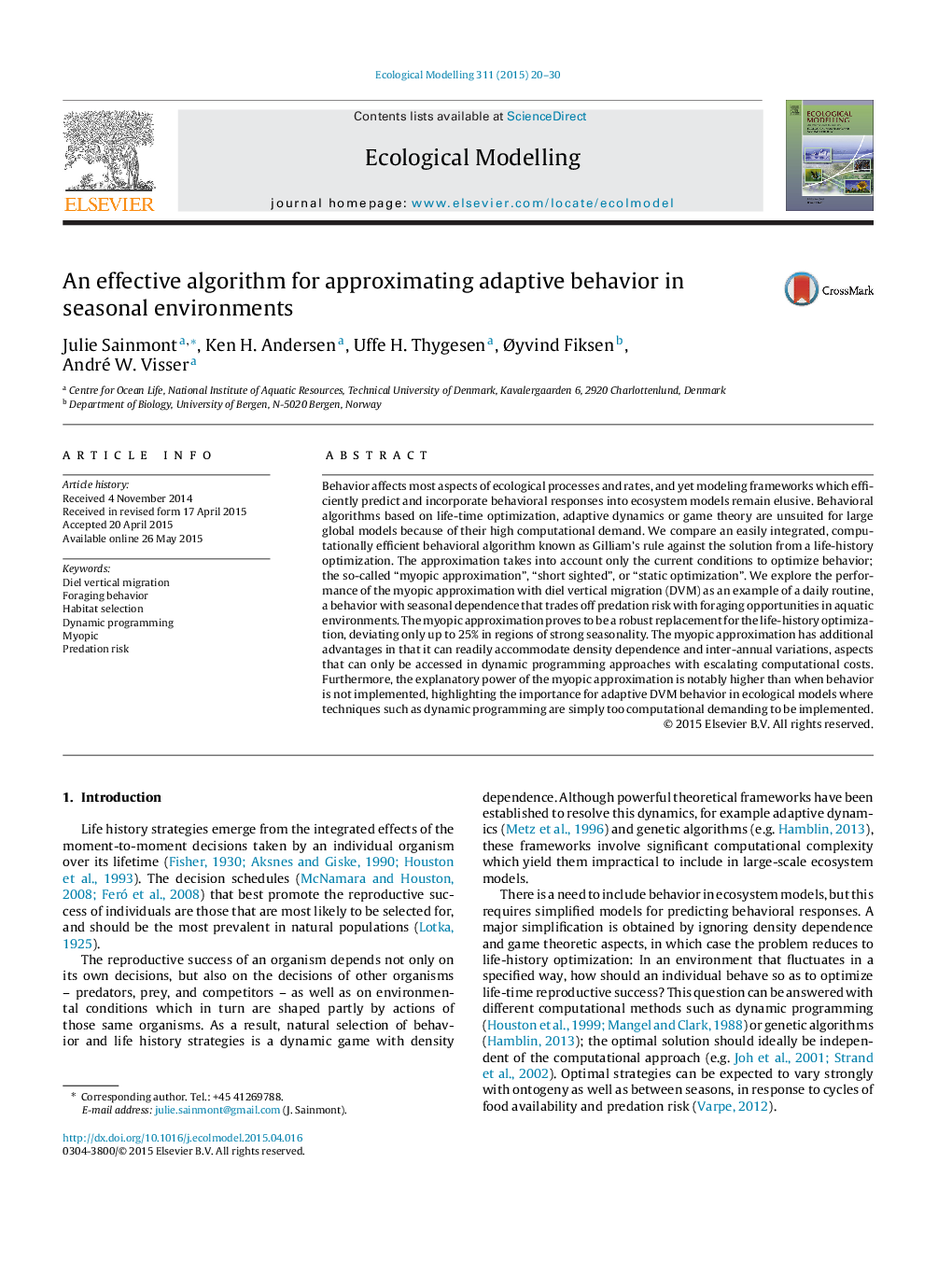| کد مقاله | کد نشریه | سال انتشار | مقاله انگلیسی | نسخه تمام متن |
|---|---|---|---|---|
| 4375633 | 1617436 | 2015 | 11 صفحه PDF | دانلود رایگان |
• We present an efficient means to include behavior in large ecosystem models.
• The method is based on optimizing behavioral response to current environmental conditions.
• The method accuracy is quantified using diel vertical migration as an example.
• It scored well in different seasonal environments and is computationally efficient.
• The method can easily accommodate density-dependence and variable environments.
Behavior affects most aspects of ecological processes and rates, and yet modeling frameworks which efficiently predict and incorporate behavioral responses into ecosystem models remain elusive. Behavioral algorithms based on life-time optimization, adaptive dynamics or game theory are unsuited for large global models because of their high computational demand. We compare an easily integrated, computationally efficient behavioral algorithm known as Gilliam's rule against the solution from a life-history optimization. The approximation takes into account only the current conditions to optimize behavior; the so-called “myopic approximation”, “short sighted”, or “static optimization”. We explore the performance of the myopic approximation with diel vertical migration (DVM) as an example of a daily routine, a behavior with seasonal dependence that trades off predation risk with foraging opportunities in aquatic environments. The myopic approximation proves to be a robust replacement for the life-history optimization, deviating only up to 25% in regions of strong seasonality. The myopic approximation has additional advantages in that it can readily accommodate density dependence and inter-annual variations, aspects that can only be accessed in dynamic programming approaches with escalating computational costs. Furthermore, the explanatory power of the myopic approximation is notably higher than when behavior is not implemented, highlighting the importance for adaptive DVM behavior in ecological models where techniques such as dynamic programming are simply too computational demanding to be implemented.
Figure optionsDownload as PowerPoint slide
Journal: Ecological Modelling - Volume 311, 10 September 2015, Pages 20–30
